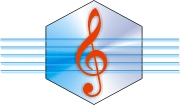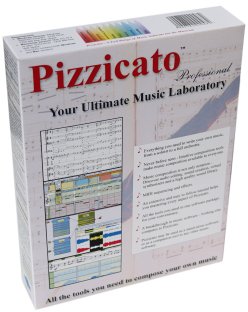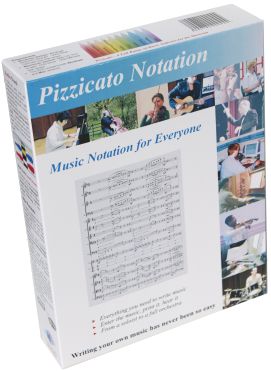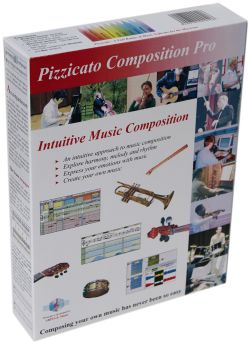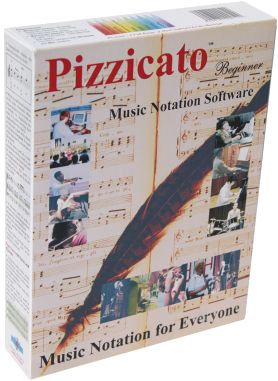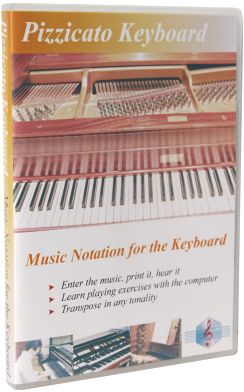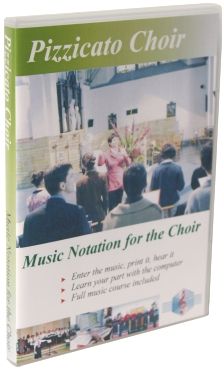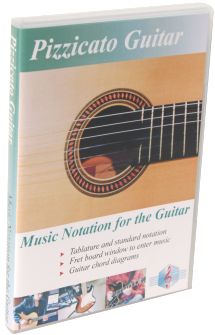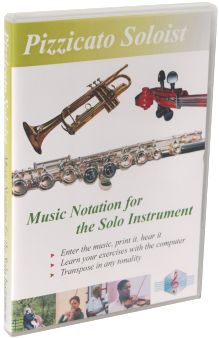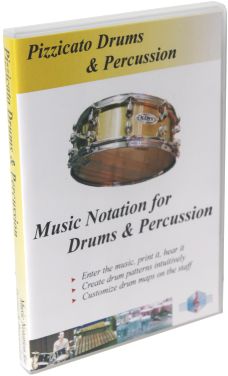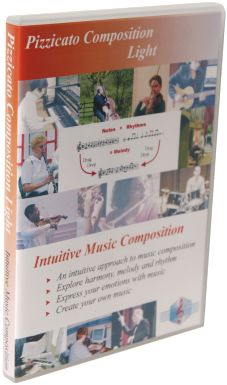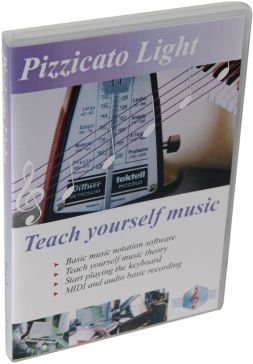Pizzicato and Music Composition Newsletters
You will find here every newsletter so far published. The editorials speak each time about a subject related to music, music composition and the application of music software. They are written so as to be easily understood by professionals as well as amateurs. No need to master the theory of harmony in all its details or to be an expert in computer music to understand them!
- Letter #29 - Music notation
- Letter #30 - Music composition, rules and inspiration
- Letter #31 - The three levels of approach to music composition
- Letter #32 - The various parts of a sound card
- Letter #33 - Managing sounds to compose music
- Letter #34 - The universal method to learn to compose music (1)
- Letter #35 - The universal method to learn to compose music (2)
- Letter #36 - The universal method to learn to compose music (3)
- Letter #37 - The universal method to learn to compose music (4)
- Letter #38 - The universal method to learn to compose music (5)
- Letter #39 - What's new in Pizzicato 3
- Letter #40 - The universal method to learn to compose music (6)
- Letter #41 - The universal method to learn to compose music (7)
- Letter #42 - The universal method to learn to compose music (8)
- Letter #43 - Practical and progressive approach of music composition (1)
- Letter #44 - Practical and progressive approach of music composition (2)
- Letter #45 - Practical and progressive approach of music composition (3)
- Letter #46 - Practical and progressive approach of music composition (4)
- Letter #47 - Practical and progressive approach of music composition (5)
- Letter #48 - Practical and progressive approach of music composition (6)
- Letter #49 - Practical and progressive approach of music composition (7)
- Letter #50 - Practical and progressive approach of music composition (8)
- Letter #51 - How can you combine several melodies (1)
- Letter #52 - How can you combine several melodies (2)
- Letter #53 - Practical and objective criteria to guide music composition (1)
- Letter #54 - Practical and objective criteria to guide music composition (2)
- Letter #55 - Practical and objective criteria to guide music composition (3)
- Letter #56 - Practical and objective criteria to guide music composition (4)
- Letter #57 - What's new in Pizzicato 3.2
- Letter #58 - Practical and objective criteria to guide music composition (5)
- Letter #59 - What is intuitive music composition?
- Letter #60 - Intuitive music composition (1)
- Letter #61 - Intuitive music composition (2)
- Letter #62 - Intuitive music composition (3)
- Letter #63 - Intuitive music composition (4)
- Letter #64 - Creating a melody (1)
- Letter #65 - Creating a melody (2)
- Letter #66 - Melody and rhythm (1)
- Letter #67 - Using VST instruments in combination with Pizzicato
- Letter #68 - Melody and rhythm (2)
- Letter #69 - Vectorial music composition
- Letter #70 - What's new in Pizzicato 3.3
- Letter #71 - Teach yourself music composition with Pizzicato (1)
- Letter #72 - Teach yourself music composition with Pizzicato (2)
- Letter #73 - Teach yourself music composition with Pizzicato (3)
- Letter #74 - Teach yourself music composition with Pizzicato (4)
- Letter #75 - Teach yourself music composition with Pizzicato (5)
- Letter #76 - Teach yourself music composition with Pizzicato (6)
- Letter #77 - What's new in Pizzicato 3.4
- Letter #78 - The Pizzicato 3.4 global view
- Letter #79 - Music composition for the orchestra
- Letter #80 - Theory and practice of music composition (1)
- Letter #81 - Theory and practice of music composition (2)
- Letter #82 - Theory and practice of music composition (3)
- Letter #83 - Theory and practice of music composition (4)
- Letter #84 - Theory and practice of music composition (5)
- Letter #85 - Theory and practice of music composition (6)
- Letter #86 - What's new in Pizzicato 3.5
- Letter #87 - Theory and practice of music composition (7)
- Letter #88 - Theory and practice of music composition (8)
- Letter #89 - Tutorial for a music composition example (1)
- Letter #90 - Tutorial for a music composition example (2)
- Letter #91 - Tutorial for a music composition example (3)
- Letter #92 - Tutorial for a music composition example (4)
- Letter #93 - Tutorial for a music composition example (5)
- Letter #94 - Tutorial for a music composition example (6)
- Letter #95 - Pizzicato 3.5.4 and its new features
- Letter #96 - Sound layers - Tutorial example of music composition (1)
- Letter #97 - Pizzicato 3.6 and its new features
- Letter #98 - Sound layers - Tutorial example of music composition (2)
- Letter #99 - Sound layers - Tutorial example of music composition (3)
- Letter #100 - Sound layers - Tutorial example of music composition (4)
- Letter #101 - Sound layers - Tutorial example of music composition (5)
- Letter #102 - Counterpoint with Pizzicato - Tutorial (1)
- Letter #103 - Counterpoint with Pizzicato - Tutorial (2)
- Letter #104 - Counterpoint with Pizzicato - Tutorial (3)
- Letter #105 - Counterpoint with Pizzicato - Tutorial (4)
- Letter #106 - Counterpoint with Pizzicato - Tutorial (5)
- Letter #107 - Counterpoint with Pizzicato - Tutorial (6)
- Letter #108 - Counterpoint with Pizzicato - Tutorial (7)
- Letter #109 - Pizzicato 3.6.2 - Harmony and Counterpoint, Alternative notation
- Letter #110 - Counterpoint with Pizzicato - Tutorial (8)
- Letter #111 - Unitary Music Theory (1)
- Letter #112 - Unitary Music Theory (2)
- Letter #113 - How to predict the success of a piece of music for a given public?
- Letter #114 - Theory and practice of music composition (parts 1 and 2)
- Letter #115 - Theory and practice of music composition (part 3)
- Lettre #116 - Theory and practice of music composition (partie 4)
- Lettre #117 - Theory and practice of music composition (partie 5)
- Lettre #118 - Theory and practice of music composition (partie 6)
- Lettre #119 - Theory and practice of music composition (partie 7)
- Lettre #120 - Theory and practice of music composition (partie 8)
Top of page
©
Copyright 2000-2024 - Arpege sprl
All rights reserved for all countries
Pizzicato is a trademark owned by Arpege sprl
All rights reserved for all countries
Pizzicato is a trademark owned by Arpege sprl
